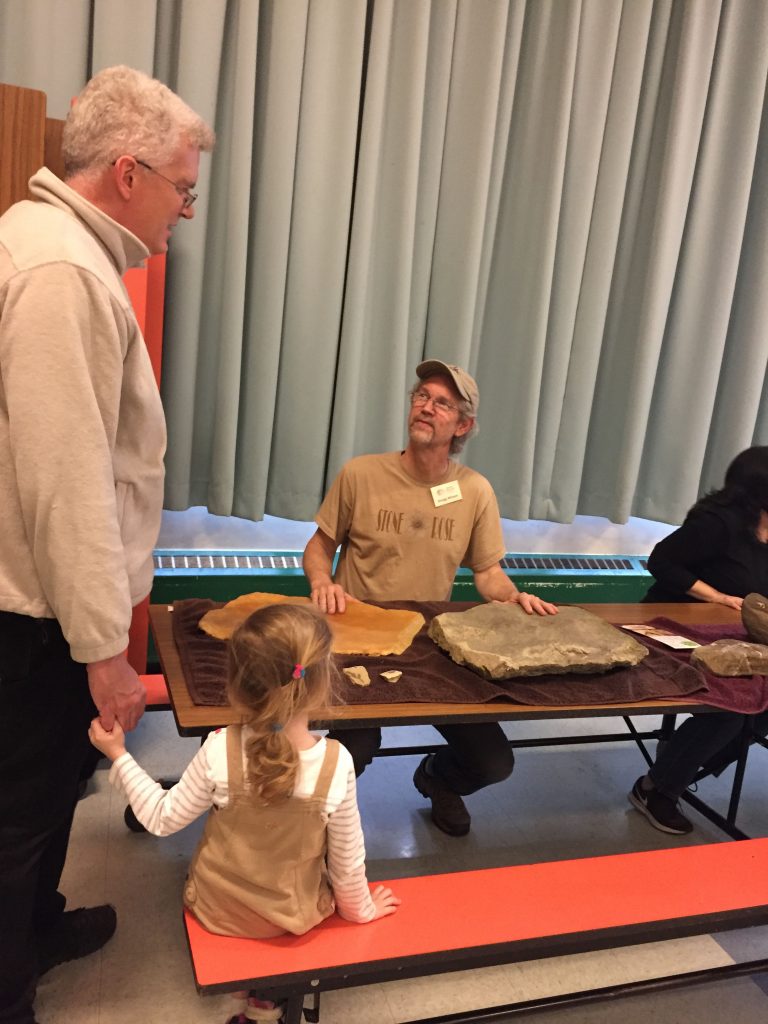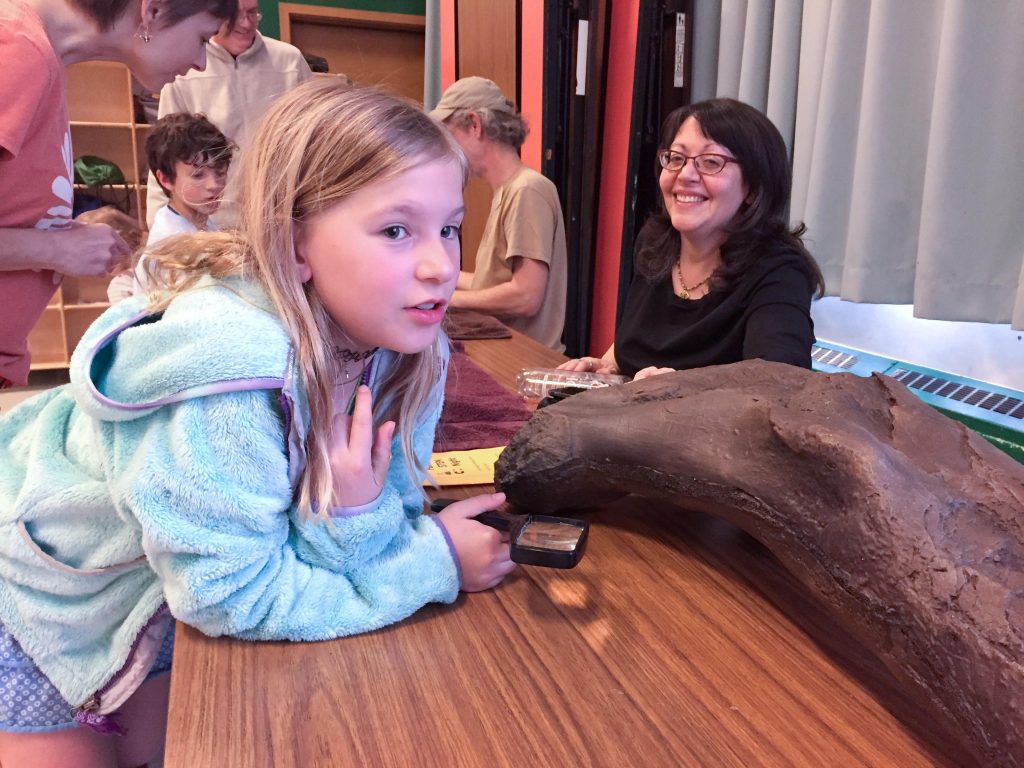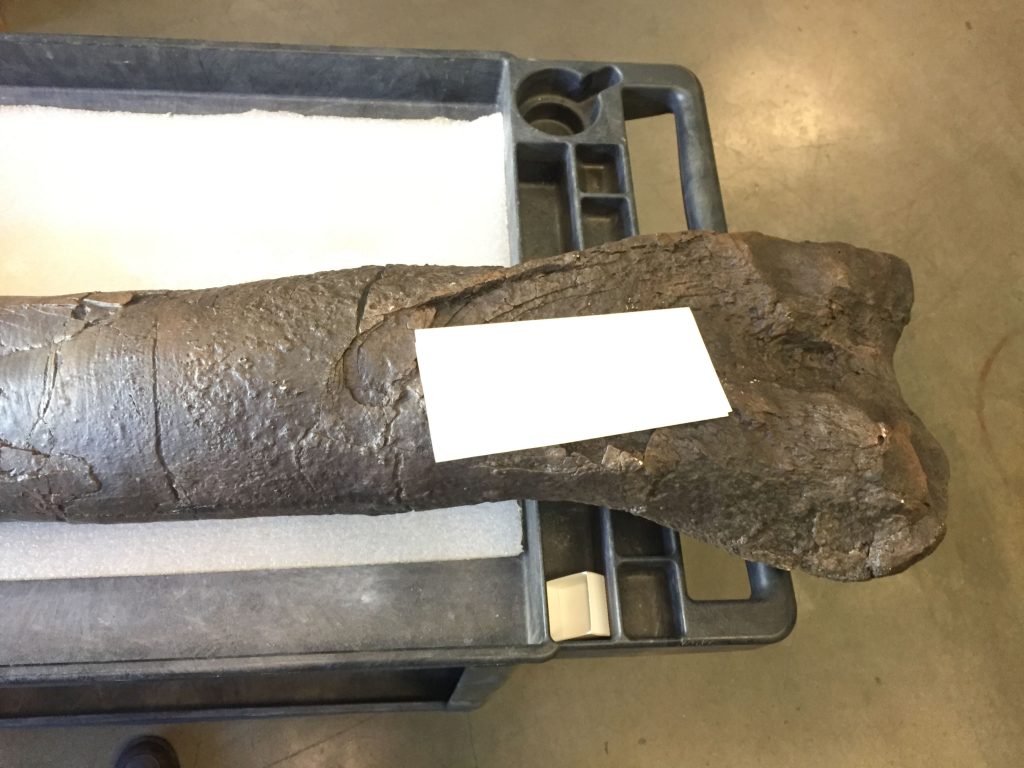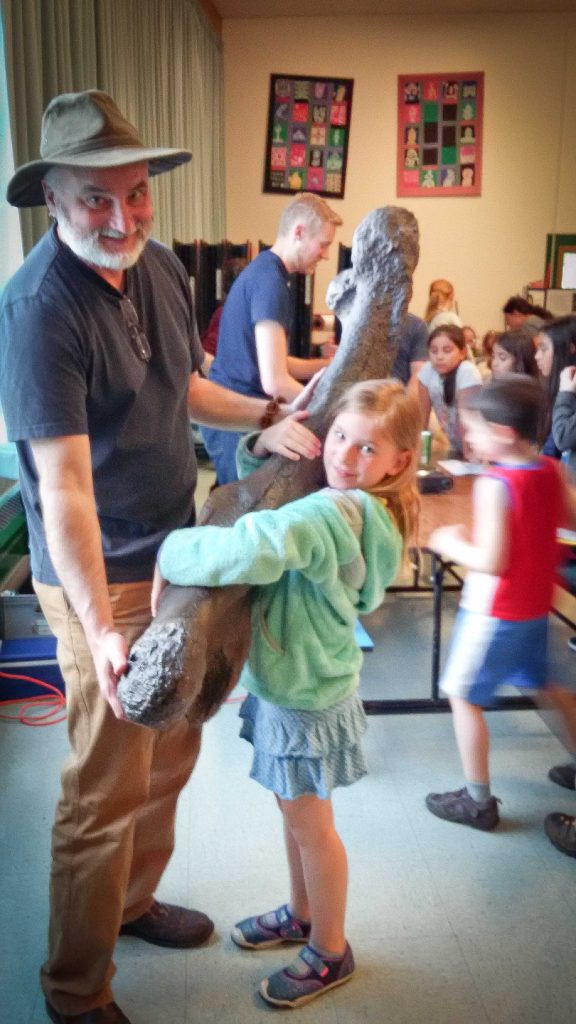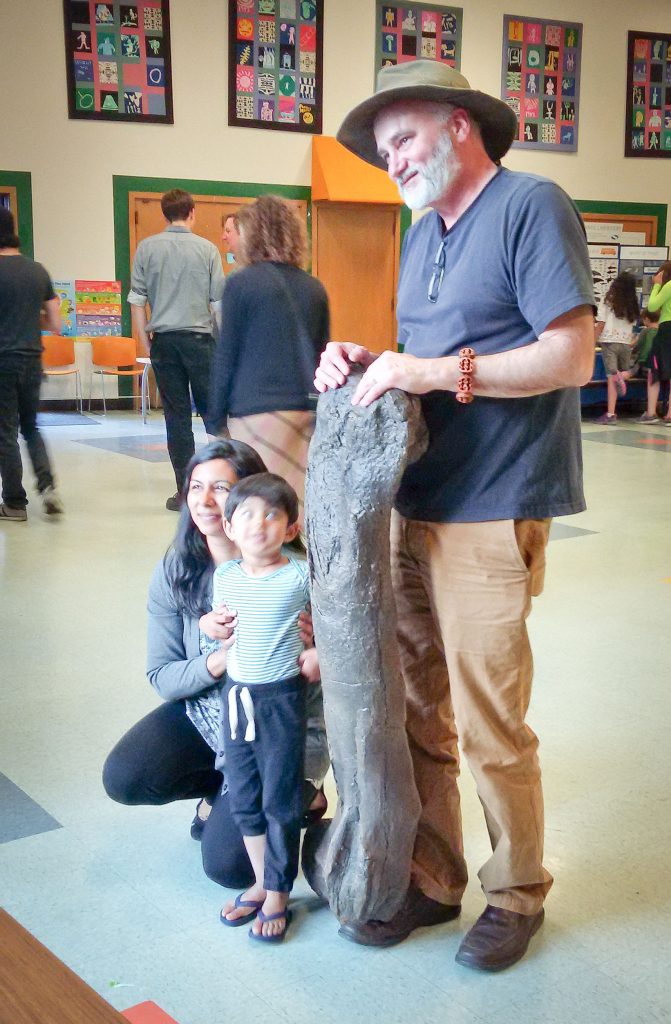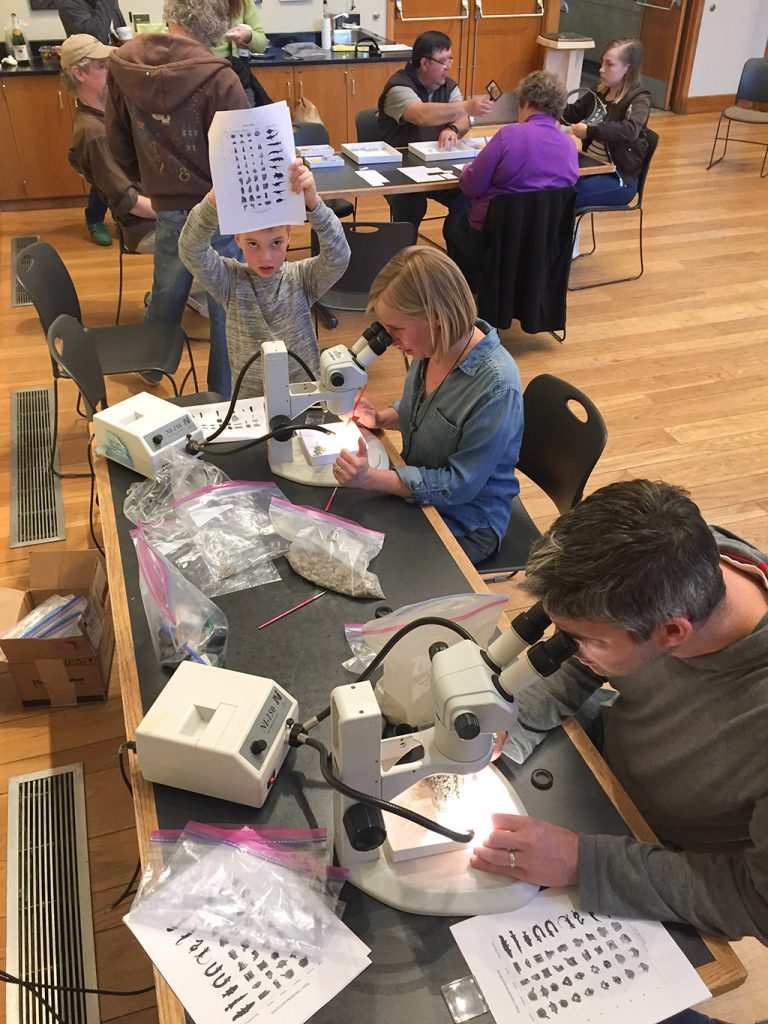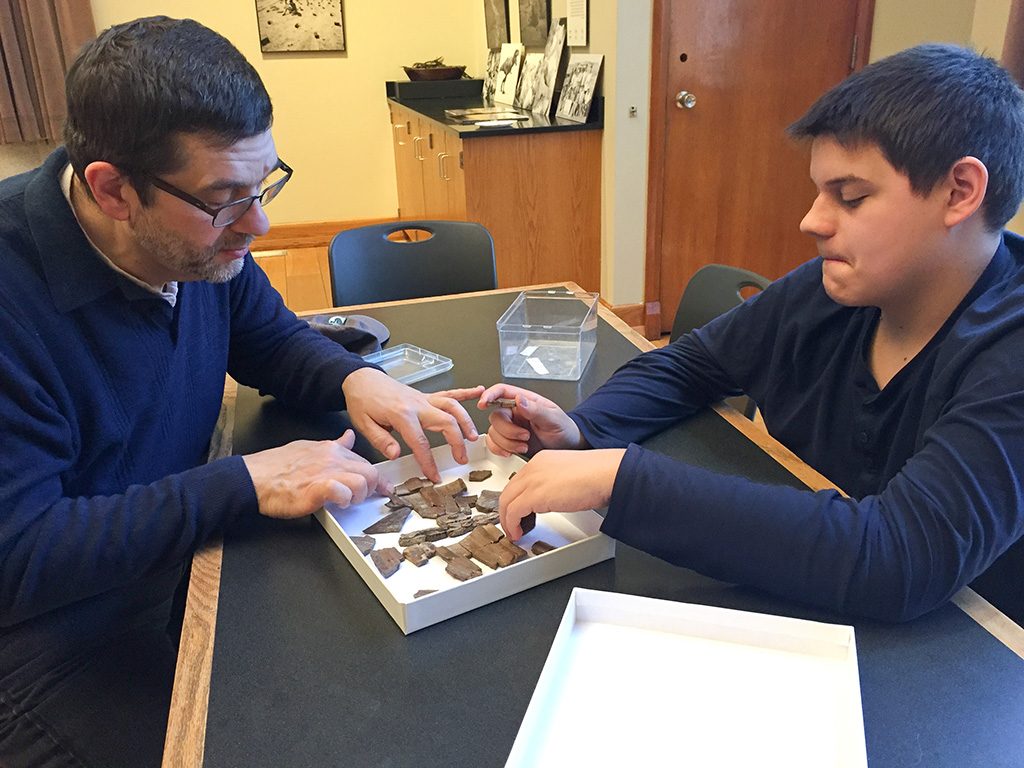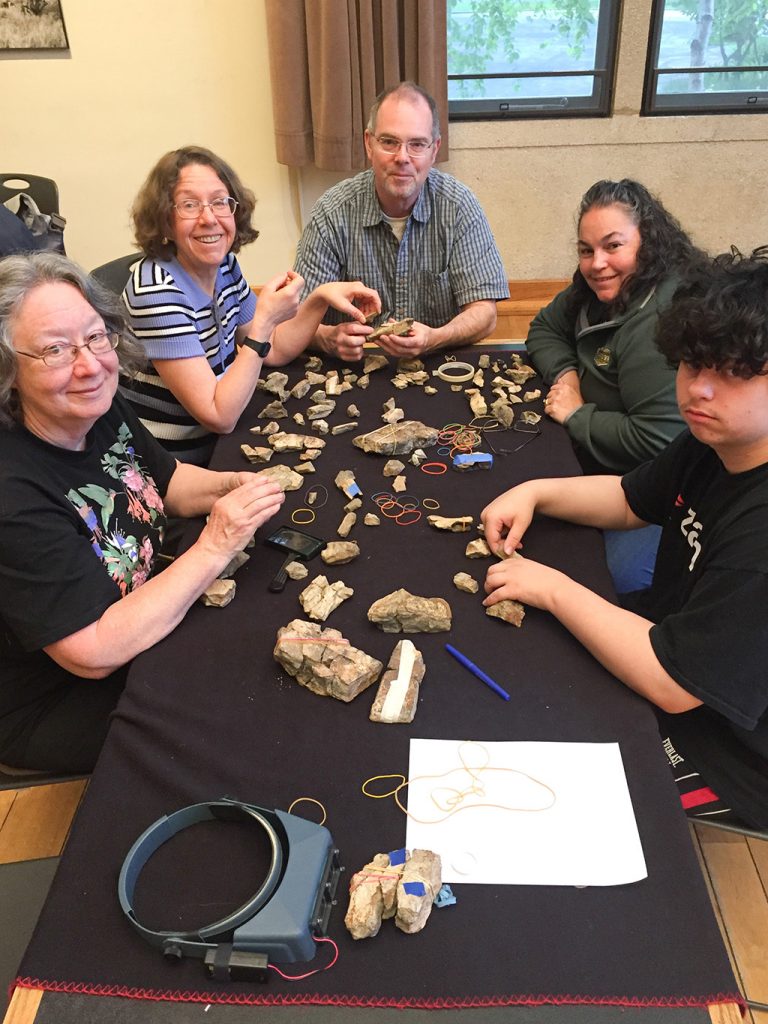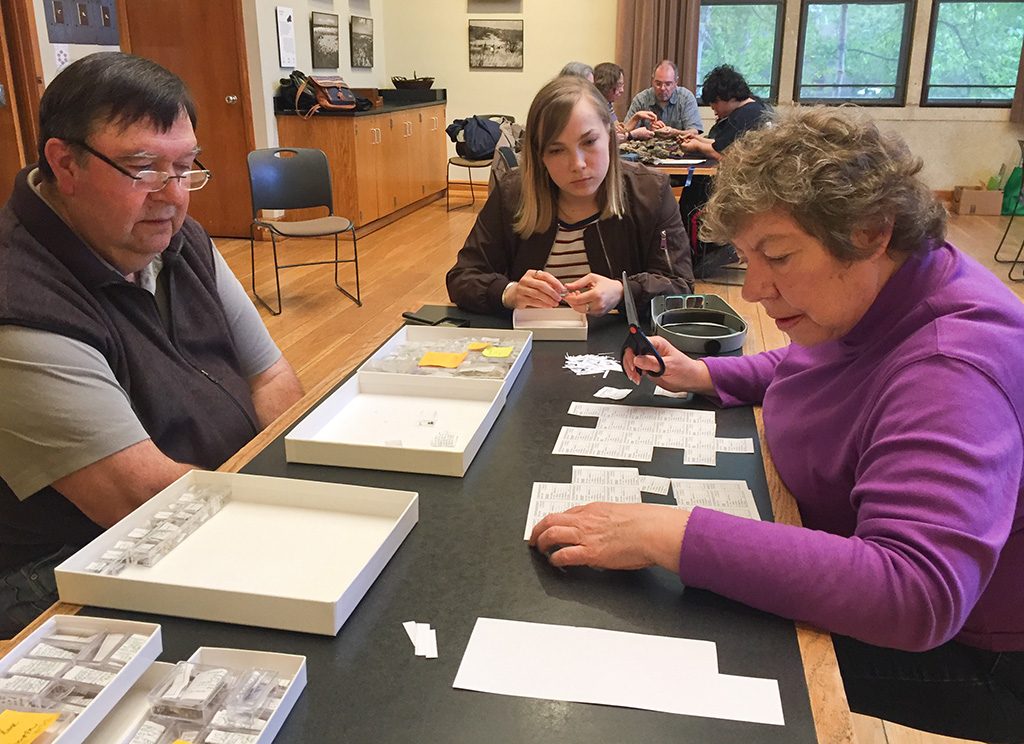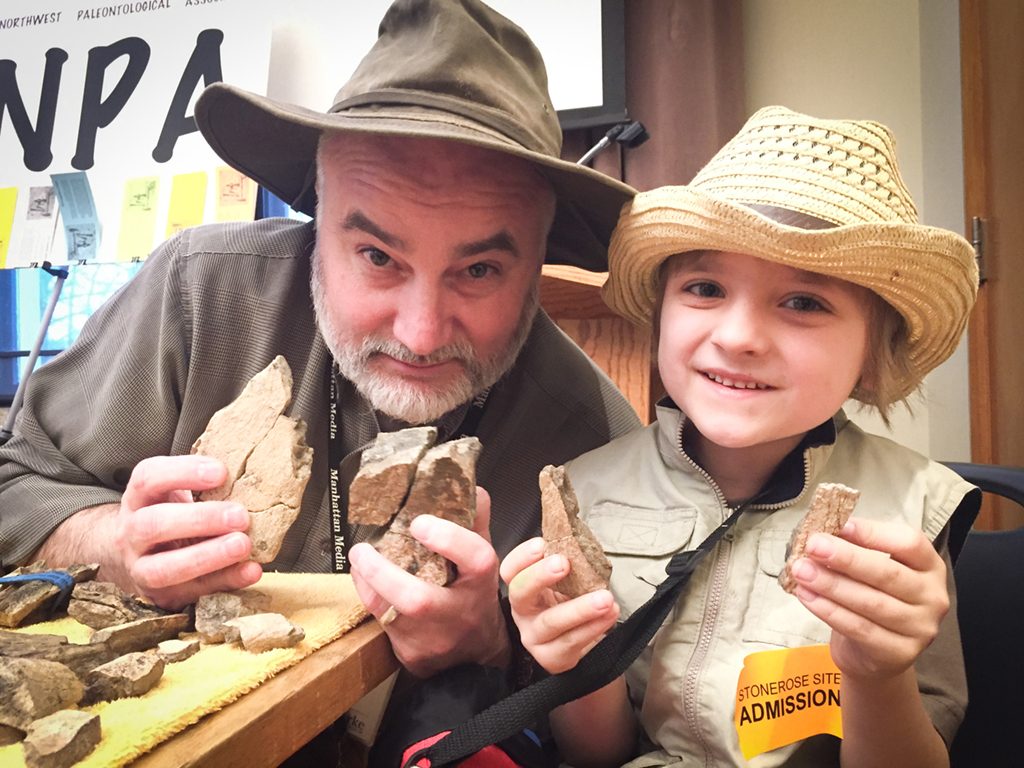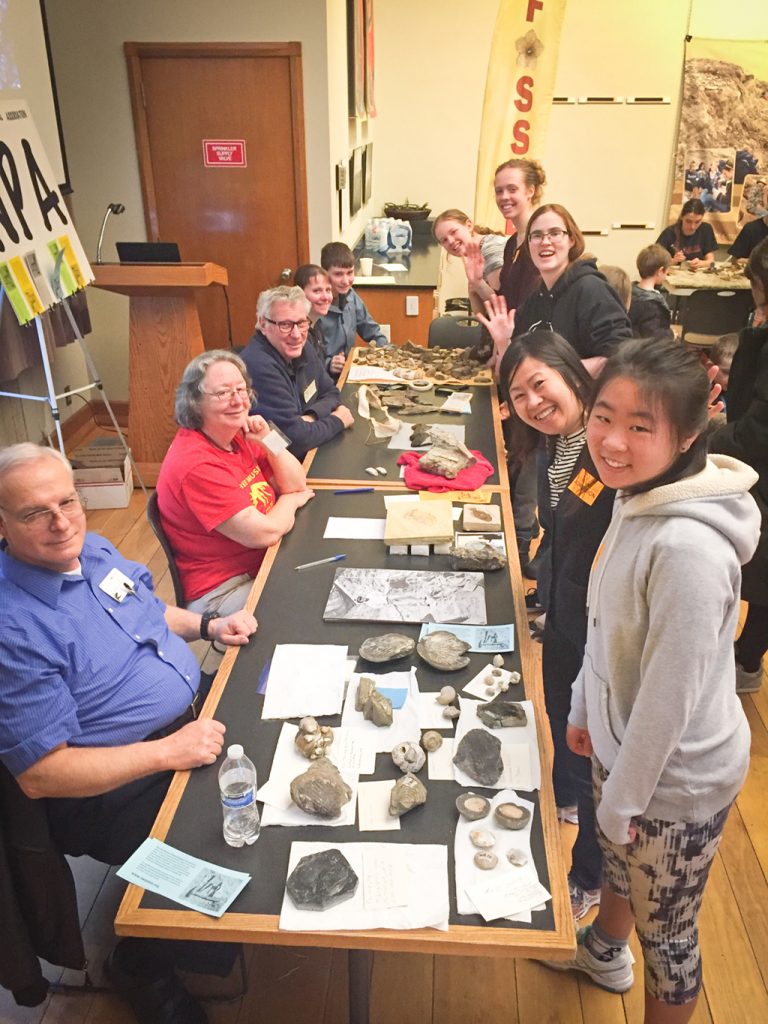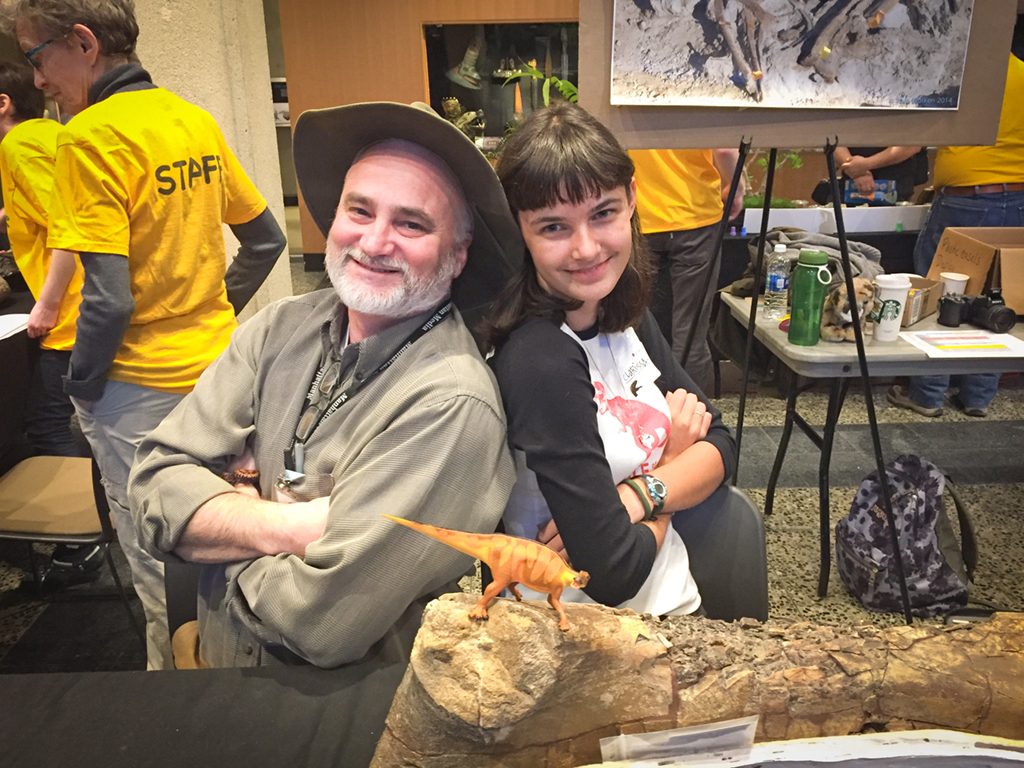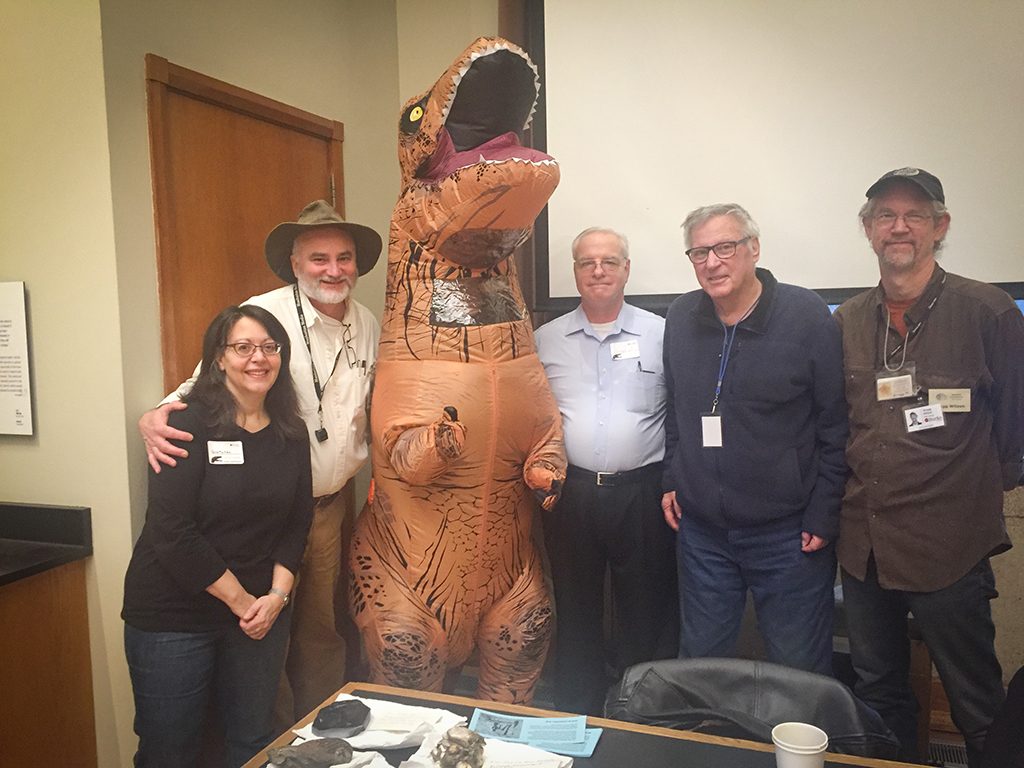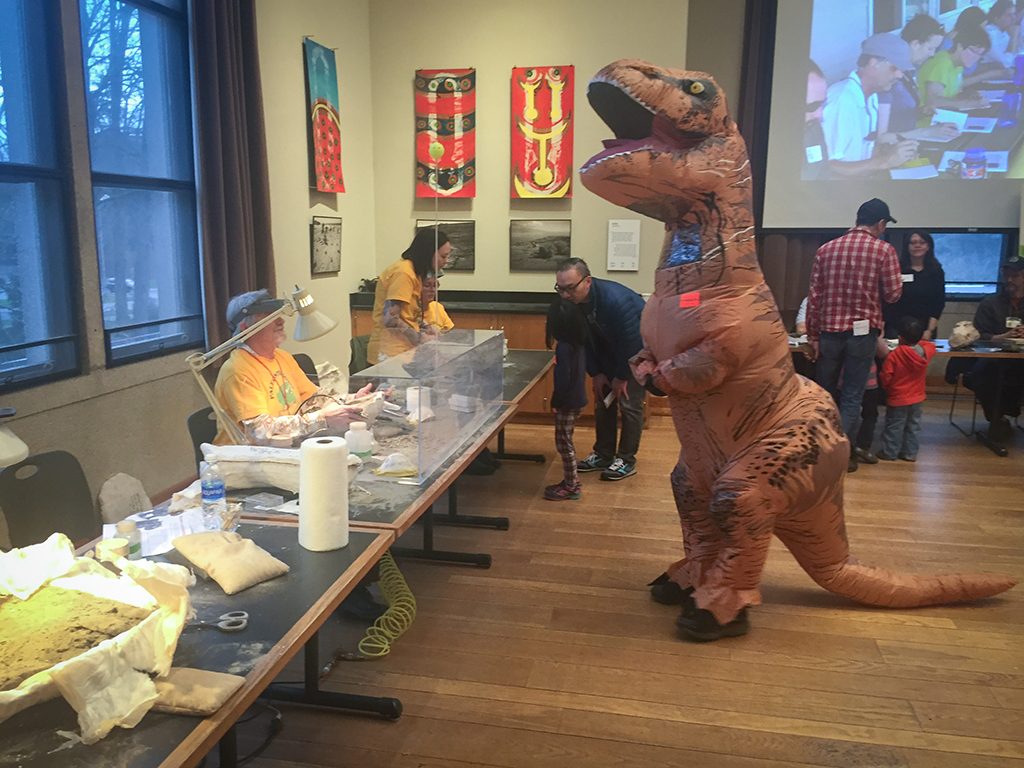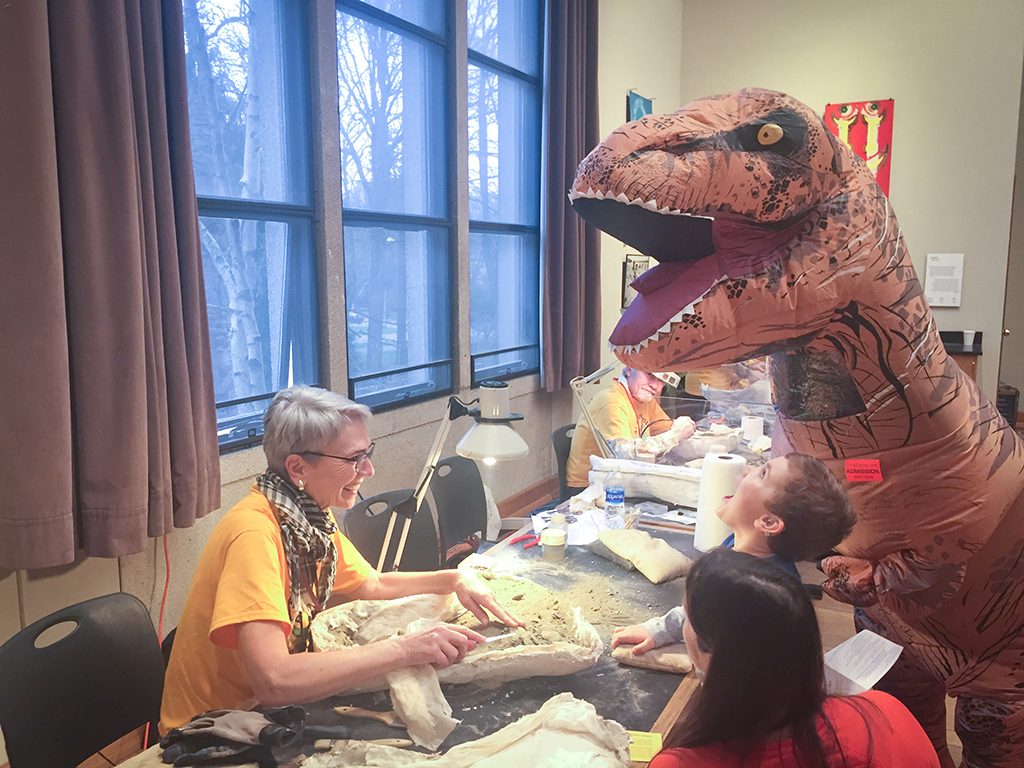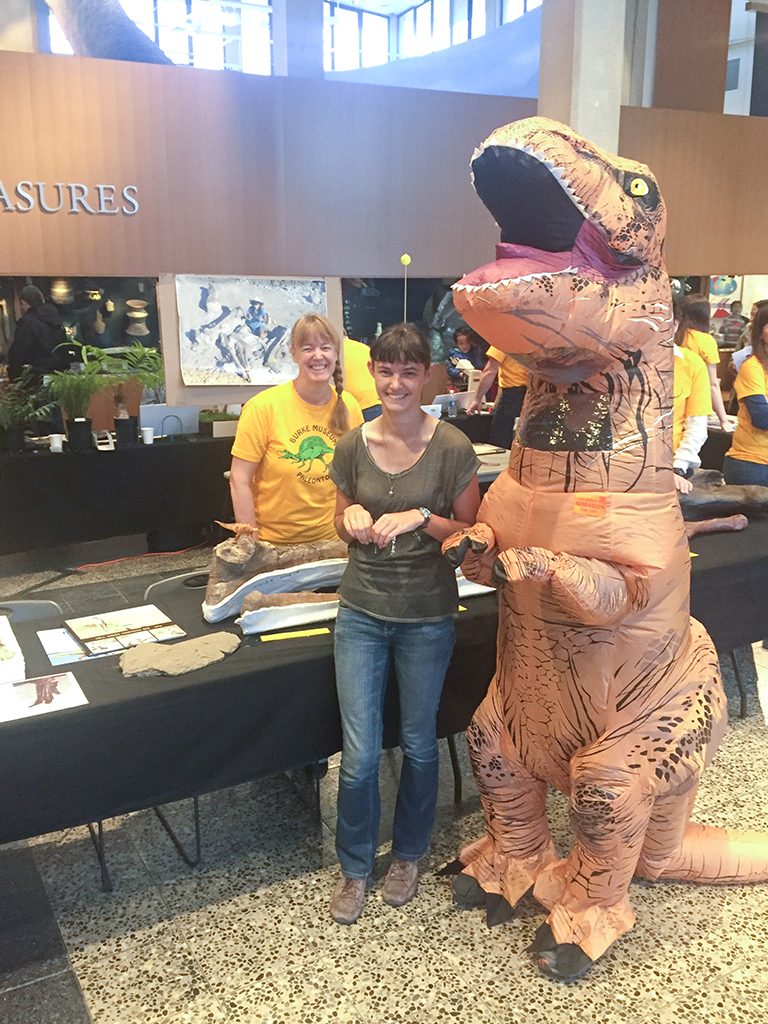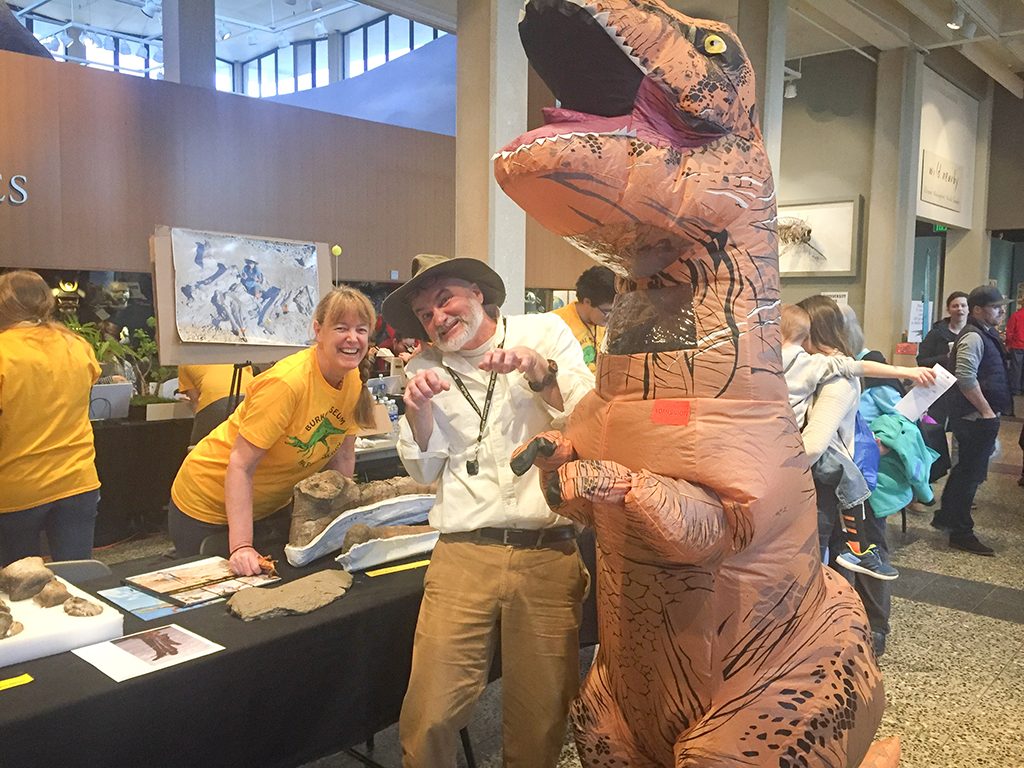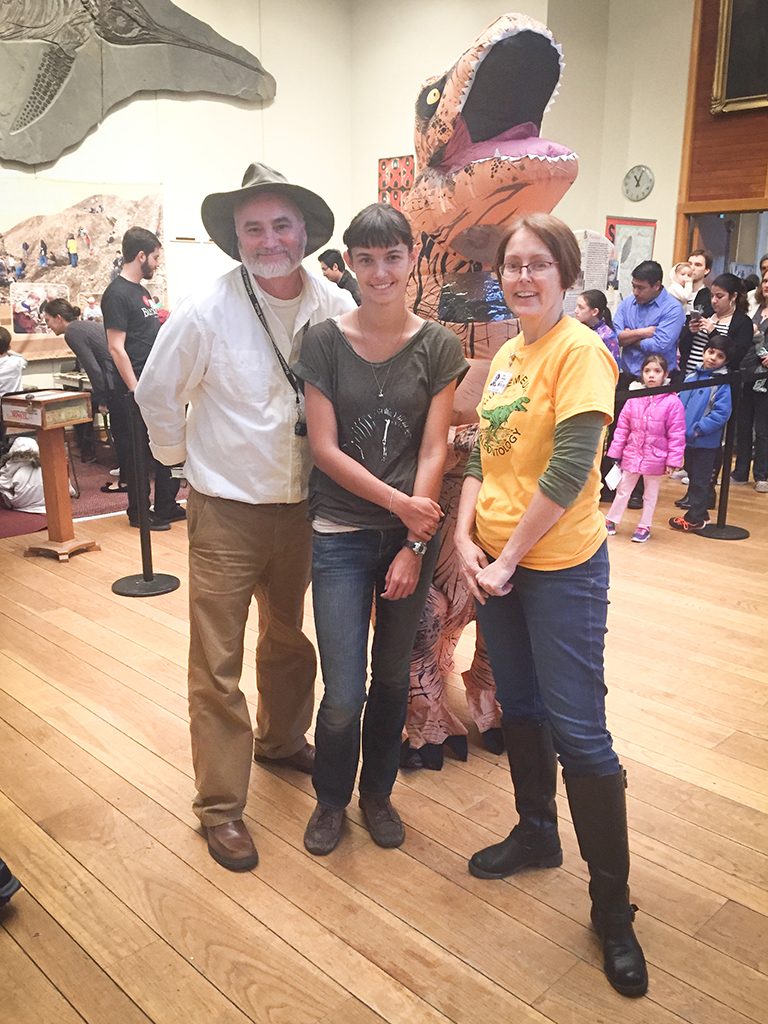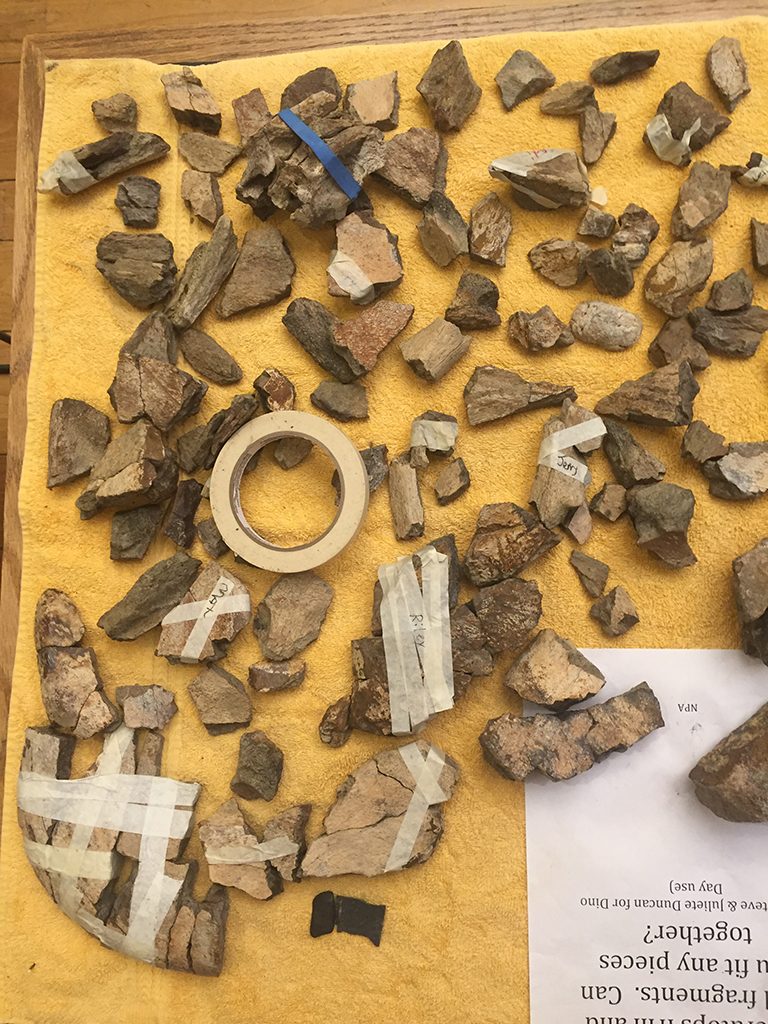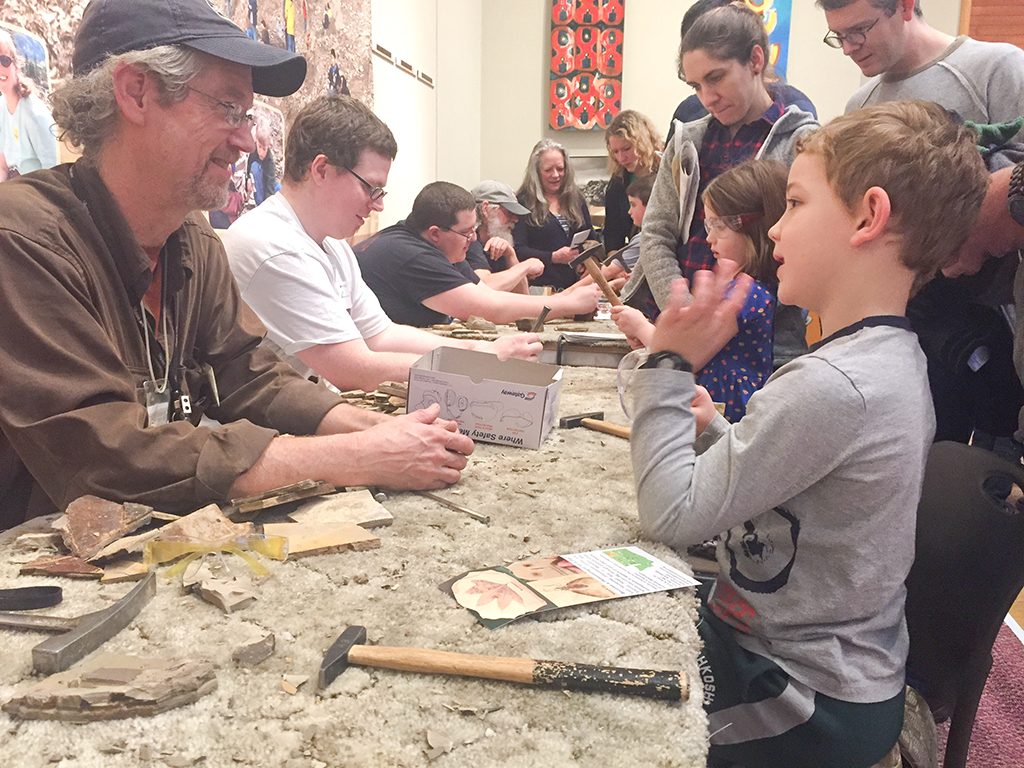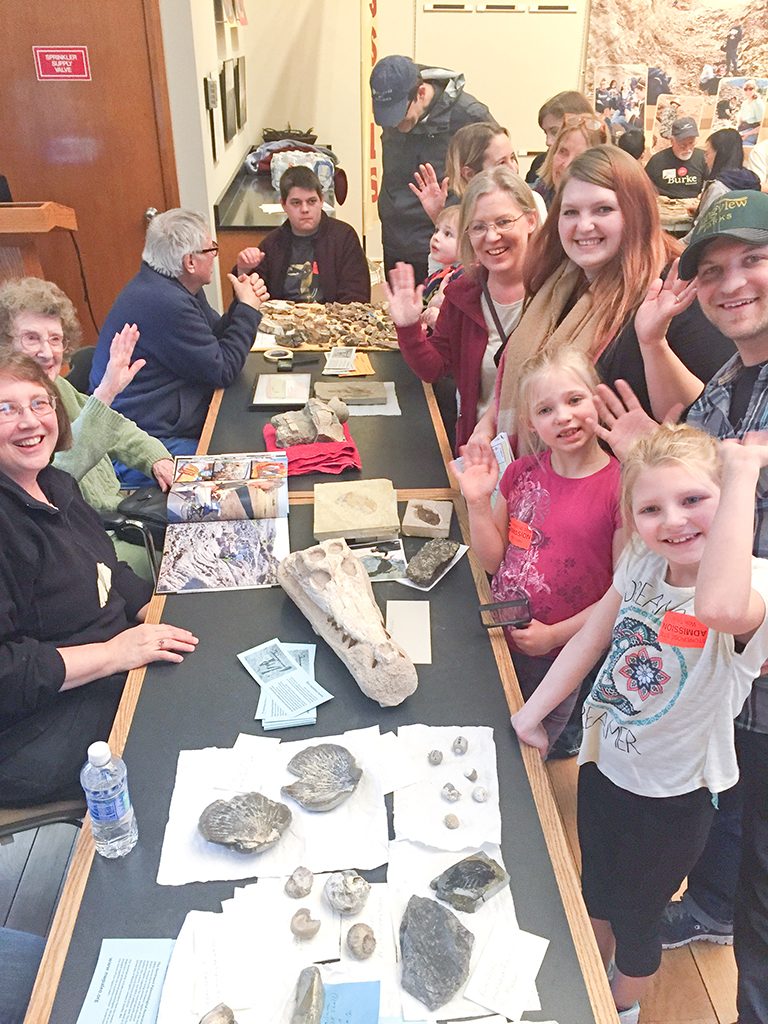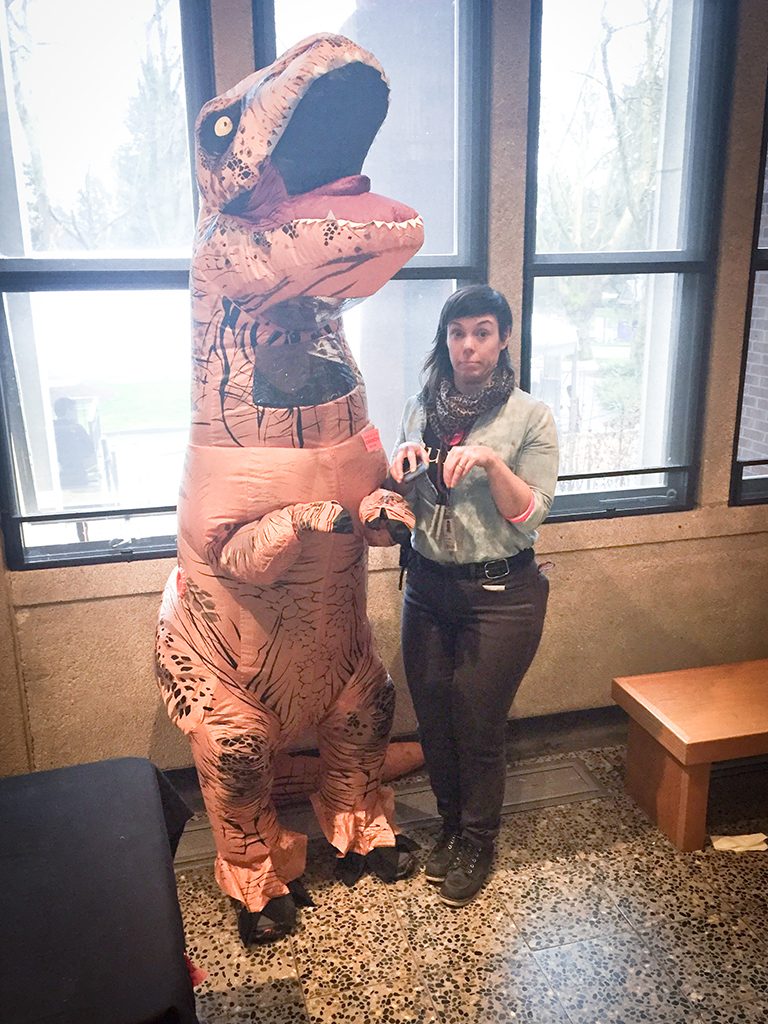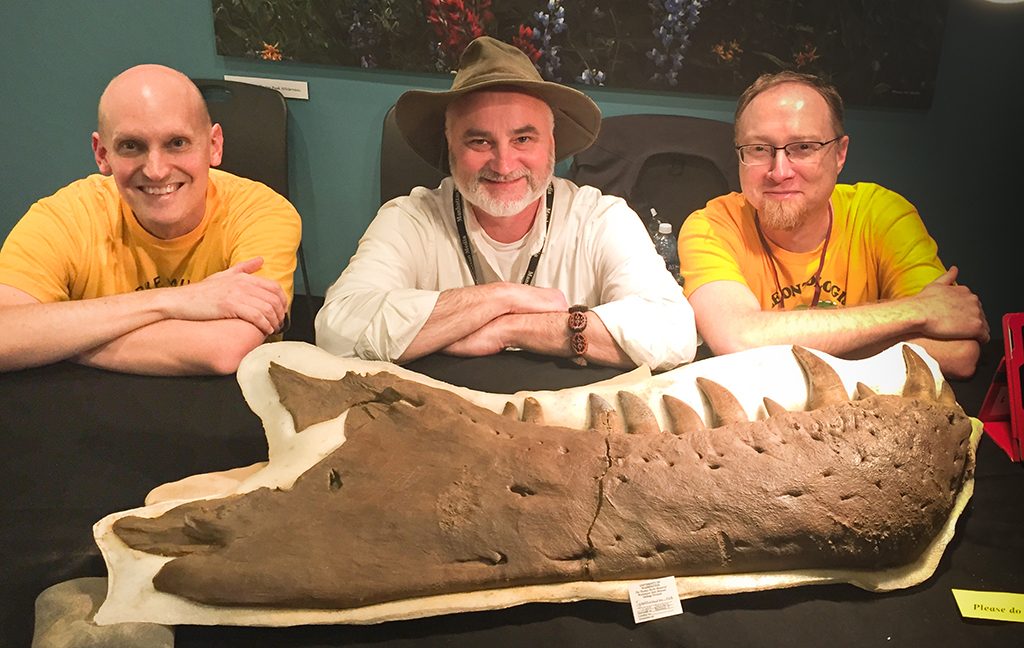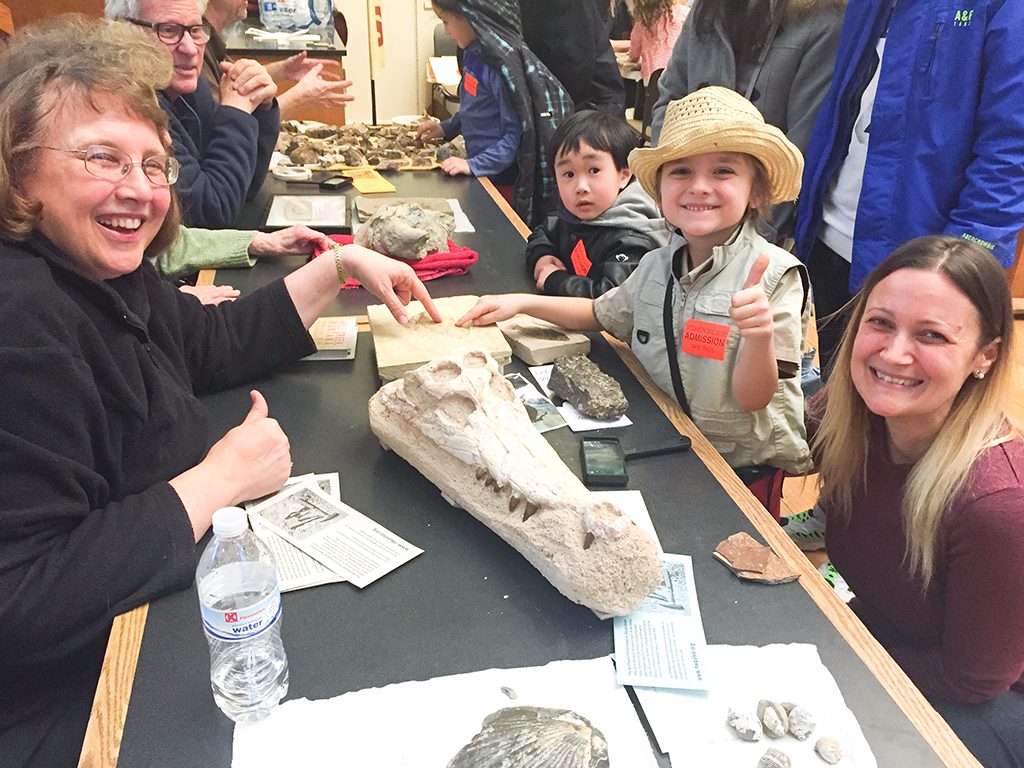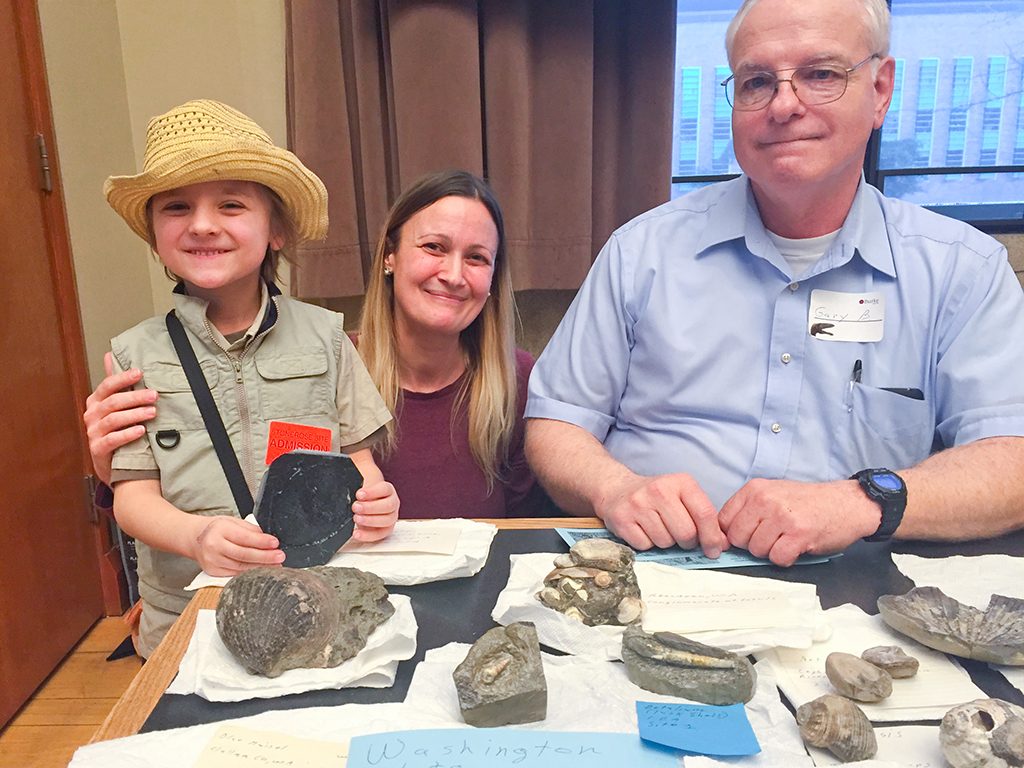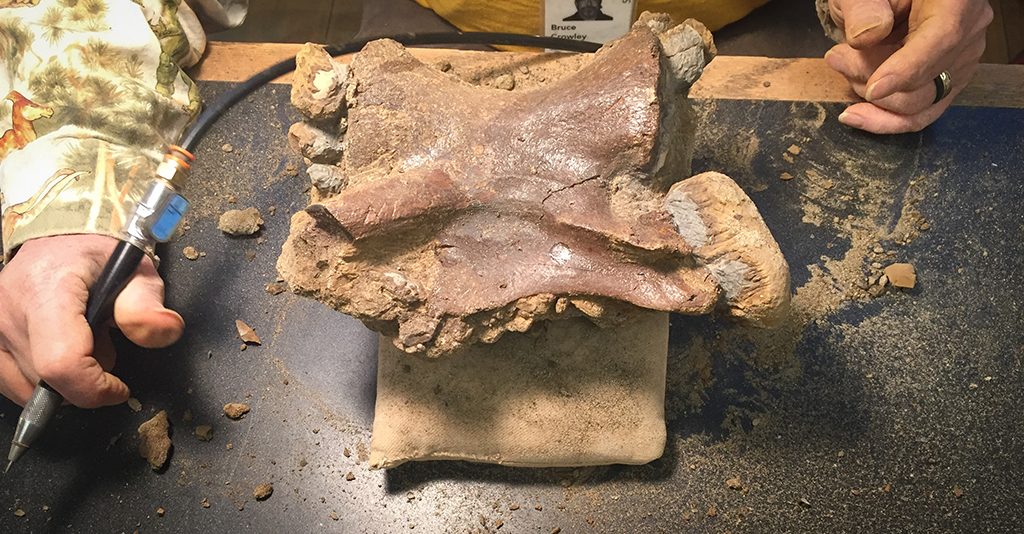During Jim Chatters’ presentation on March 26, NPA members and guests got an exclusive sneak preview of new discoveries coming out the Hoyo Negro underwater cave in Mexico, including some information that can’t be discussed pending formal scientific publication. One of topics that can be mentioned now was how X-rays of the bone structure of the teenage girl Naia’s skeleton reveal a hard life, with periods of nutritional stress, and evidence of pregnancy and injuries. On March 30, a few days after his NPA presentation, Chatters gave a more technical version of the Naia story at the 2017 meeting of the Society for American Archaeology in Vancouver, Canada, as reported in the journal Nature and elsewhere. Read More →
Caroline Strömberg Gets Charles Schuchert Award
Burke Museum Curator of Paleobotany and UW professor Caroline Strömberg has received the 2017 Charles Schuchert Award from the Paleontological Society in recognition of her ground-breaking work on fossil phytoliths as a way to understand ancient plants and environments, and in particular grasses and the animals that feed on them. Phytoliths are tiny silica bodies that form in the tissues of some plants. Because phytoliths are made of mineral, they are preserved in soils when plants die and decompose, and thus may leave no other fossil traces. The microscopic shapes of phytoliths are distinctive to particular plant groups, sometimes down to the species level. However, the role they play in plants is not completely understood. Phytoliths make grasses gritty for animals to chew–according to traditional thinking, leading to the evolution of high-crowned (hypsodont) teeth that grow as they are worn away, as in horses and other grazing animals. Read More →
Guest Speaker Brody Hovatter – Sunday May 21, 2017
We will begin our May 21, 2017 NPA Meeting a bit differently…
Brody Hovatter will provide a tour of the Burke collections at 1 p.m. on the 21st. The tour should only take 30 to 40 minutes, and a class from UW will be in on the tour too.
1:00 pm: Burke Collections Tour
1:35 pm: NPA Meeting starts in Burke Room
1:50 pm: Presentation by Brody Hovatter
Brody will be our speaker addressing:
Mammal Diversity and Ecology Across the KT Boundary
(and up to 1.2 million years afterwards)
Brody Hovatter is the Assistant Director of the DIG Field School and manager of the Wilson Paleontology Lab at the University of Washington. In addition to serving as Assistant Director, he has been an instructor for the program since 2014. He graduated with his Bachelor of Science in Biology from the University of Washington in 2014. His research in the Wilson Lab focuses on fossil mammals from northeastern Montana, for which he has received funding from the Mary Gates Endowment as well as departmental awards within the Biology Department. He has presented his research at numerous conferences, including the Society of Vertebrate Paleontology and Undergraduate Research Symposium at the University of Washington. Brody has loved teaching since an early age, and has served as a research mentor or co-mentor for numerous undergraduate students at the University of Washington. He also enjoys participating in local scientific outreach, and has served as a tutor for many middle school and high school students in the Seattle area.
Looking forward to seeing everyone at the May 21st meeting!
(Also: Another reminder about our Hands-On Activity in the Burke Room this Sunday, May 7th 10-2pm)
Hands-On Activity: Sunday, May 7, 2017
Drop by the Burke Room from 10:00 a.m. – 2:00 p.m.
April / May News
May Meeting Rescheduled: Sunday, May 21, 2017
We have moved the May NPA meeting up one week to accommodate members’ Memorial Day weekend plans.
Meet in the Burke Room at 1:00 p.m.
Hands-On Activity: Sunday, May 7, 2017
Drop by the Burke Room from 10:00 a.m. – 2:00 p.m.
Stonerose Weekend: April 28 – 30
Extinction of Mainland and Island Mammoth Populations in Alaska 6,000 Years Ago
Duane Froese, University of Alberta, presents new research on the extinction of mammoths and other megafauna from Arctic North America.
https://www.youtube.com/watch?v=3Rr2jcx6OFA
How Baleen Evolved in Whales
A new study (that included Nicholas Pyenson from the Smithsonian and an Affiliate Curator Burke Museum) looked at the origin of baleen and how modern toothless baleen whales evolved from early toothed forms without baleen. Baleen filter plates in whale jaws are unique among mammals, but are made of keratin similar to horns and hoofs. The researchers reviewed the fossil evidence and looked at four possible evolutionary scenarios in which whales had both teeth and baleen at the same time or lost their teeth before they evolved baleen. Other studies have suggested that suction feeding by toothed ancestors may have led to the development of baleen. The new study proposes that a toothless suction feeding stage may have come before baleen developed. Unfortunately, the embryonic development of tooth buds and baleen in modern whales is still not well understood.
Carlos Mauricio Peredo, Nicholas D. Pyenson and Alexandra T. Boersma (2017) Decoupling Tooth Loss from the Evolution of Baleen in Whales. Frontiers of Marine Science 4: Article 67 https://doi.org/10.3389/fmars.2017.00067
http://journal.frontiersin.org/article/10.3389/fmars.2017.00067/full


